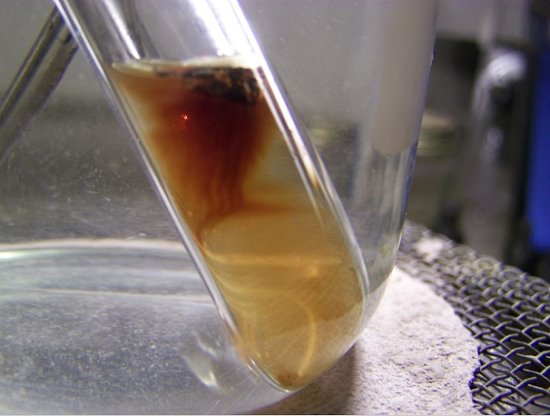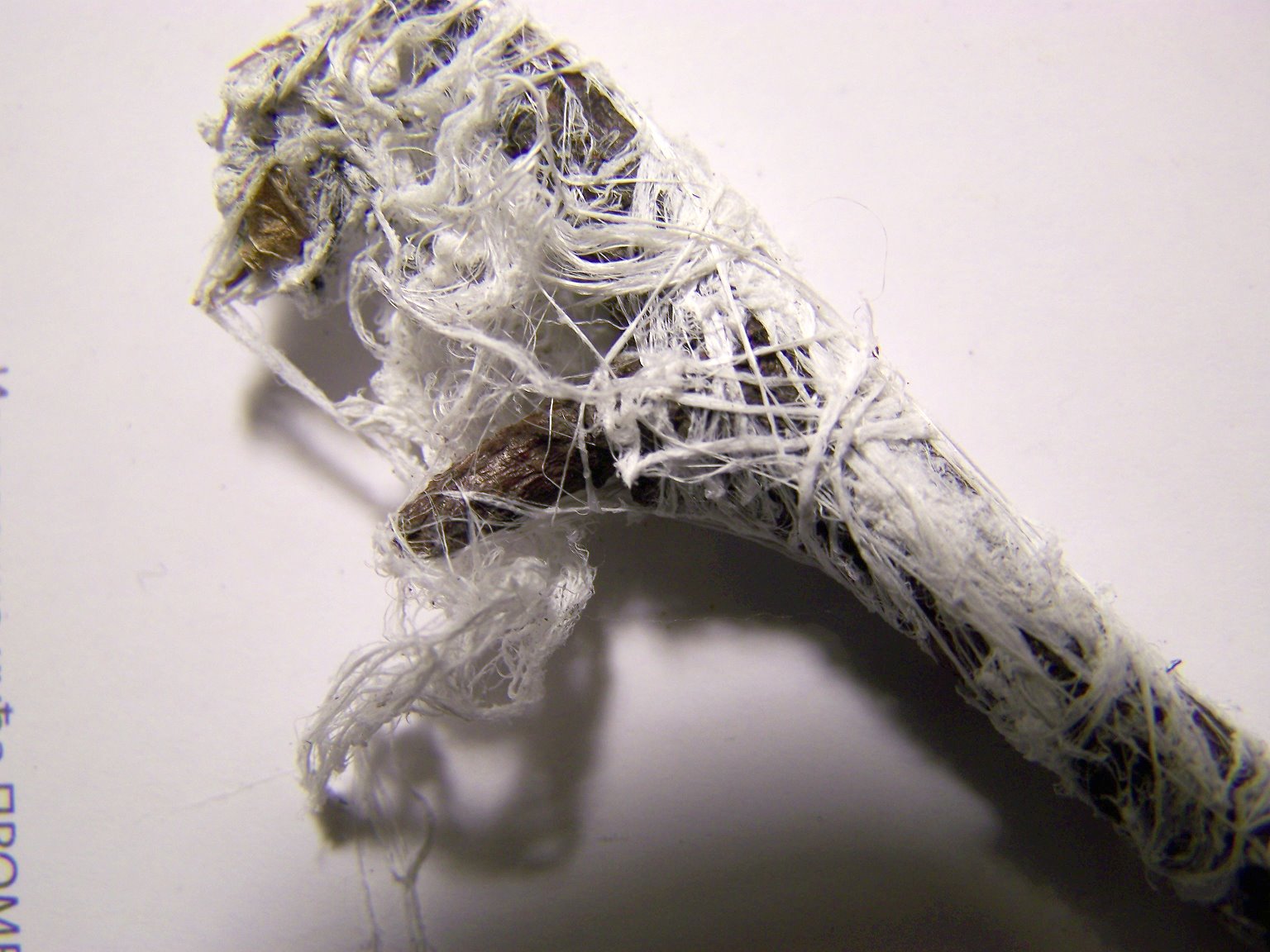Clifford E Carnicom
Jan 06 2013
An improved method of penetration of the environmental (airborne) filament sample has been achieved. This accomplishment provides a pathway to an increased understanding of the structure and contents of the fibers. Numerous studies have been reported on the nature of this filament material over the years on this site. This material is the same type of material that was sent to the U.S. Environmental Protection Agency (EPA) over a decade ago. The EPA refused to identify this material on the behalf of the public interest.
The original sample in this case came from Serbia; much appreciation is extended for the effort that made this sample available for study. A photograph of this original sample is shown below:
Environmental Filament Sample that is the basis of this investigation. Additional photographs related to this sample can be found on the following outline page:
Morgellons and Recent Findings.
Photograph of the chemical method established to break down the outer shell of the filament and to access the contents of the filament. The method uses a combination of concentrated sodium hydroxide, concentrated potassium hydroxide and heat in a boiling water bath. Note the separation of colors within the solution within the test tube, one yellowish and one a deep red color. These colors represent different chemical and structural components of the filament. Approximately 45 minutes are required at boiling temperature to complete the separation.
Considerable experimentation was required to achieve the method used in this report. Many trials have been taken in the past using sodium hydroxide and heat alone. The combination of the extreme caustic solutions applied to the filament along with a gentler heating process is a substantial improvement over previous methods. Initial conclusions about the nature of the filament using this method will be discussed in a following report. At this point it is of interest to note the following observations:
1. The original filament material is pure white, with no external or internal colors available.
2. The breakdown of the filament shows two colored effects, one a yellowish component and one a strong reddish component. The strong colors internal to the filament, especially the brilliant reddish hue, are of more than casual interest. Readers may wish to reexamine the numerous papers on this site involving blood and erythrocyte research as they relate to cultured (biological and environmental) filaments.
A great deal of information on the nature of these filaments is already available on this site; readers are encouraged to become familiar with this body of research that exists. The advantage of the current finding is that it will allow more direct and ready access to the chemical composition of the filament samples.




